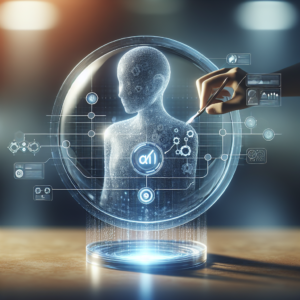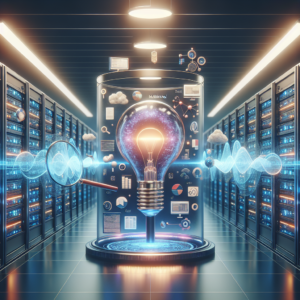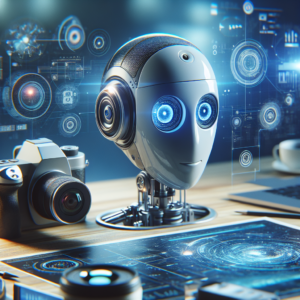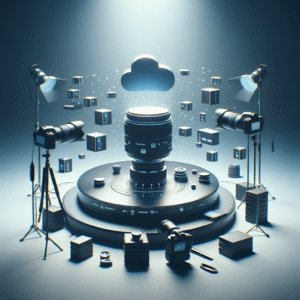Have you ever wondered how technology can change the way we interact with our environment? Mixed reality is entering the scene, blending the digital and physical worlds in ways I never thought possible. This fusion is reshaping our experiences, enabling us to perceive our surroundings through a completely new lens.
What is Mixed Reality?
Mixed reality (MR) is a technology that combines elements of both virtual reality (VR) and augmented reality (AR). While virtual reality immerses me in a completely digital environment and augmented reality overlays digital information on my real-world view, mixed reality allows for interactions between the two.
In mixed reality, I can manipulate digital objects as if they were part of my physical space. For instance, I can interact with a 3D model of a building in my living room, seeing it from different angles or even altering its structure with my hands. This seamless interplay opens up countless opportunities for various sectors.
The Evolution of Mixed Reality
The concept of mixed reality has roots in earlier technologies. I find it fascinating to trace its evolution:
- Early Beginnings: The journey started with simple overlays of information in training scenarios.
- Augmented Reality: The introduction of AR applications like Pokémon GO popularized the blending of our physical environment with the digital.
- Virtual Reality: The immersive experiences created by VR headsets set the stage for the advanced interaction that MR offers today.
This evolution reflects how we, as users, have gradually come to expect richer interactions with technology.
How Does Mixed Reality Work?
Understanding how mixed reality operates can be quite exciting. I often marvel at the technology that makes it all possible:
Hardware Components
Several key hardware elements contribute to the mixed reality experience:
- Sensors: I rely on cameras and sensors to capture my environment and recognize physical objects.
- Displays: Mixed reality headsets use advanced display technology to project digital content.
- Computational Power: My device needs ample processing power to run MR applications smoothly, ensuring minimal lag or interruptions during use.
Software Components
The software behind mixed reality is just as critical:
- Tracking Systems: These systems allow my device to accurately understand where I am and how I interact with both digital and physical objects.
- Rendering Engines: They generate realistic graphics, making the MR experience feel cohesive and seamless.
- User Interfaces: An intuitive UI ensures that I can interact with the mixed reality content effortlessly.
The perfect harmony of these components creates an immersive experience that consistently amazes me.
Applications of Mixed Reality
Mixed reality is not just a technological marvel; it’s impacting various industries in transformative ways. Here are some applications that I find particularly noteworthy:
Education
In the educational sector, mixed reality is revolutionizing how I learn and interact with information. For example:
- Virtual Classrooms: Students can attend classes in MR environments, allowing lessons to be more engaging and interactive.
- Simulations: I can experience realistic simulations that facilitate hands-on learning, like performing surgery or conducting science experiments without the risks.
Healthcare
The healthcare industry is also reaping the benefits of mixed reality, which enhances both patient care and medical training:
- Surgical Training: MR allows surgeons to practice in lifelike environments, improving their skills before they operate on real patients.
- Patient Visualization: Doctors can use mixed reality to show patients 3D visualizations of their conditions, making it easier for them to understand treatment plans.
Real Estate and Architecture
When it comes to real estate and architecture, mixed reality is changing the way I view properties and designs:
- Virtual Property Tours: I can walk through a property from anywhere in the world, making house-hunting more convenient.
- Architectural Visualization: Architects can showcase their designs in mixed reality, allowing clients to visualize changes before construction begins.
Gaming and Entertainment
For me, gaming has reached new heights thanks to mixed reality:
- Immersive Gaming Experiences: Games like Minecraft Earth blend my real-world surroundings with digital gameplay, making each session feel unique.
- Interactive Storytelling: I can engage in interactive stories that change based on my choices and interactions within my physical environment.
Training and Development
Mixed reality is redefining training methodologies in various fields:
- Corporate Training: Employees can participate in MR training sessions, simulating real-world scenarios that enhance their problem-solving skills.
- Emergency Response: First responders can train using realistic simulations that prepare them for on-the-ground emergency situations.
The Future of Mixed Reality
Looking ahead, I can’t help but feel excitement about the potential of mixed reality. Innovations are already on the horizon that promises to make my experiences even richer:
Enhanced Interaction
Future developments aim to refine the interaction aspects of mixed reality:
- Gesture Recognition: As hardware improves, I anticipate being able to interact with digital elements just through hand gestures, making the experience feel more natural.
- Voice Commands: With advances in voice recognition technology, I imagine controlling mixed reality environments using simple voice commands, leading to a more immersive experience.
Widespread Adoption
I foresee a future where mixed reality becomes a commonplace tool in various settings:
- Everyday Use: MR could transform my daily activities, such as shopping or socializing, allowing me to blend the digital world seamlessly into my life.
- Collaborative Workspaces: Imagine working with colleagues around the globe in mixed reality, where we can collaborate on projects face-to-face, even if we are miles apart.
Challenges in Mixed Reality Implementation
While mixed reality holds immense potential, I must acknowledge that challenges remain as this technology progresses. Here are a few:
Technical Limitations
- Device Compatibility: Various mixed reality devices may not fully support all applications, leading to a fragmented user experience.
- Battery Life: Mixed reality applications require significant power, leading to limited usage time before needing a recharge.
User Acceptance
- Learning Curve: I recognize that some users may find adapting to mixed reality challenging, as it might feel foreign compared to more traditional technologies.
- Privacy Concerns: As mixed reality involves capturing environmental data, concerns about privacy and security must be addressed for widespread acceptance.
Cost Barriers
- High Initial Investment: The costs associated with high-quality MR equipment may deter some individuals and organizations from adopting the technology initially.
- Ongoing Expenses: Maintenance, software updates, and other operational costs could also pose challenges, especially for businesses.
Embracing Mixed Reality in My Life
As I reflect on the transformative power of mixed reality, I am inspired to incorporate it more into my daily routine. Here are some ways I can do just that:
Learning Opportunities
- Online Courses: I can enroll in mixed reality courses that enhance my understanding of different subjects, making learning more engaging.
- Workshops: Attending workshops focusing on MR tools can teach me practical skills applicable in my personal and professional life.
Creative Expression
- Art and Design: I can use mixed reality applications to create immersive art installations or designs, blending creativity with innovative technology.
- Storytelling: I could experiment with mixed reality storytelling, crafting interactive narratives that pull my audience into a world of imagination.
Social Interaction
- Virtual Gatherings: I can organize virtual meet-ups with friends and family using mixed reality technology, allowing us to socialize in uniquely engaging environments.
- Game Nights: Playing mixed reality games with friends can foster camaraderie, creating shared experiences that feel authentic despite physical distance.
Conclusion: The Journey Ahead
As I look to the future, the journey of mixed reality excites me deeply. It is a continuously evolving technology that has the potential to transform how I perceive and interact with the world around me. While challenges remain, innovative solutions are on the horizon, paving the way for a more integrated and immersive existence. Whether in education, healthcare, gaming, or personal experiences, mixed reality is undoubtedly a force for change.
By understanding and embracing mixed reality, I can enhance my everyday experiences, making them richer and more meaningful. The possibilities are endless, and I’m eager to see how this technology continues to unfold!






